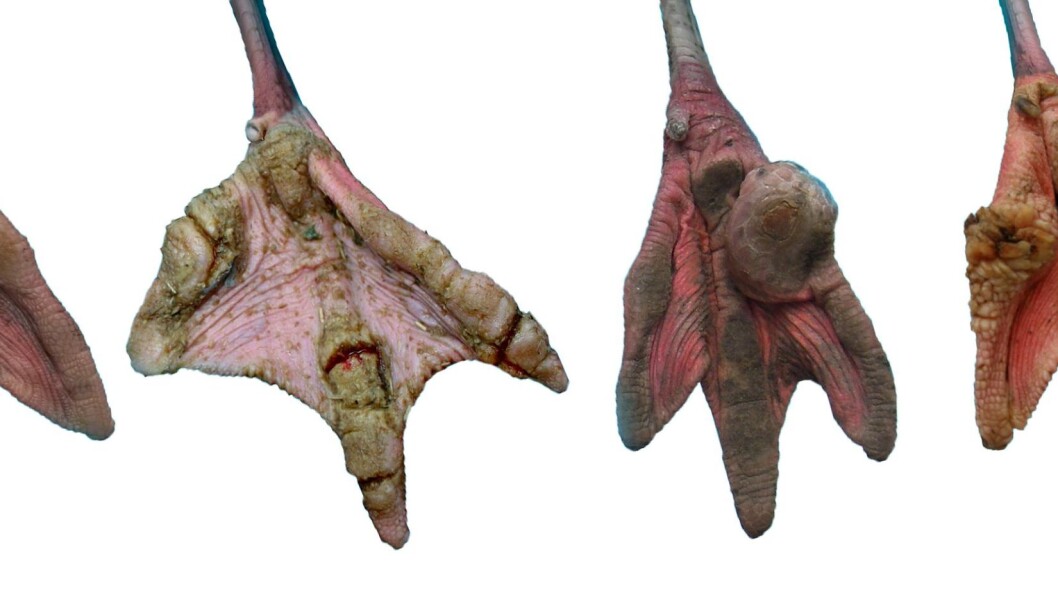I made sure to get to the American flamingos first that morning so I could be done before any visitors arrived and saw me. Then, I pulled off my shoes and socks, hiked up the legs of my pants, checked the soles of my feet for any cuts or scratches, and, finding none, set to work. Throughout the entire routine, indoor and outdoor, I asked myself two questions every other minute: 1) Is this mud or... not mud? and 2) Does anything hurt?
Mostly the second question, mind you. I knew it wasn't mud.
Flamingos, like many birds, are susceptible to a condition of inflamed feet, known loosely as "Bumblefoot." It results in sores on the soles of the feet which can get infected, cause lameness, and possibly even death. It usually first presents as a small, shiny reddish patch on the foot, often caused by abrasion. Flamingos in the wild spend most of their lives on soft mud and sand, and so they are especially susceptible to this condition. My self-appointed mission that morning was to feel for myself what they were feeling as they walked around their habitat and their indoor holding and to see if I could identify any potential rough spots which might cause them foot problems.
Treating bumblefoot is a pain that often involves soaking the bird's feet and administering antibiotics. As with most things medical, an ounce of prevention is better than a pound of cure, so it's easier to find problems and fix them before birds have problems. In perching birds, such as raptors, the secret to preventing bumblefoot is to provide lots of different perching of various sizes and textures. In ground-dwellers, especially species found in areas with soft substrate, like flamingos, you need soft surfaces to walk on. Most of the outside area was sand and soft soil; it had been grass, but hordes of hungry geese flew in and ate it all. In the indoor area, padded floor mats provided cushioning for their feet.
When I proudly told my director about the results of my investigation later that day, he didn't say much, but I'm pretty sure I saw him reaching for his pocket flask as I walked out of the room. No matter - a little eccentricity in the service of animal care never hurt anyone... though I did have to spend the next hour soaking my feet in a bucket of scalding soapy water.

Images of flamingo bumblefoot cases, Photo Credit: Adriana Nielsen

No comments:
Post a Comment